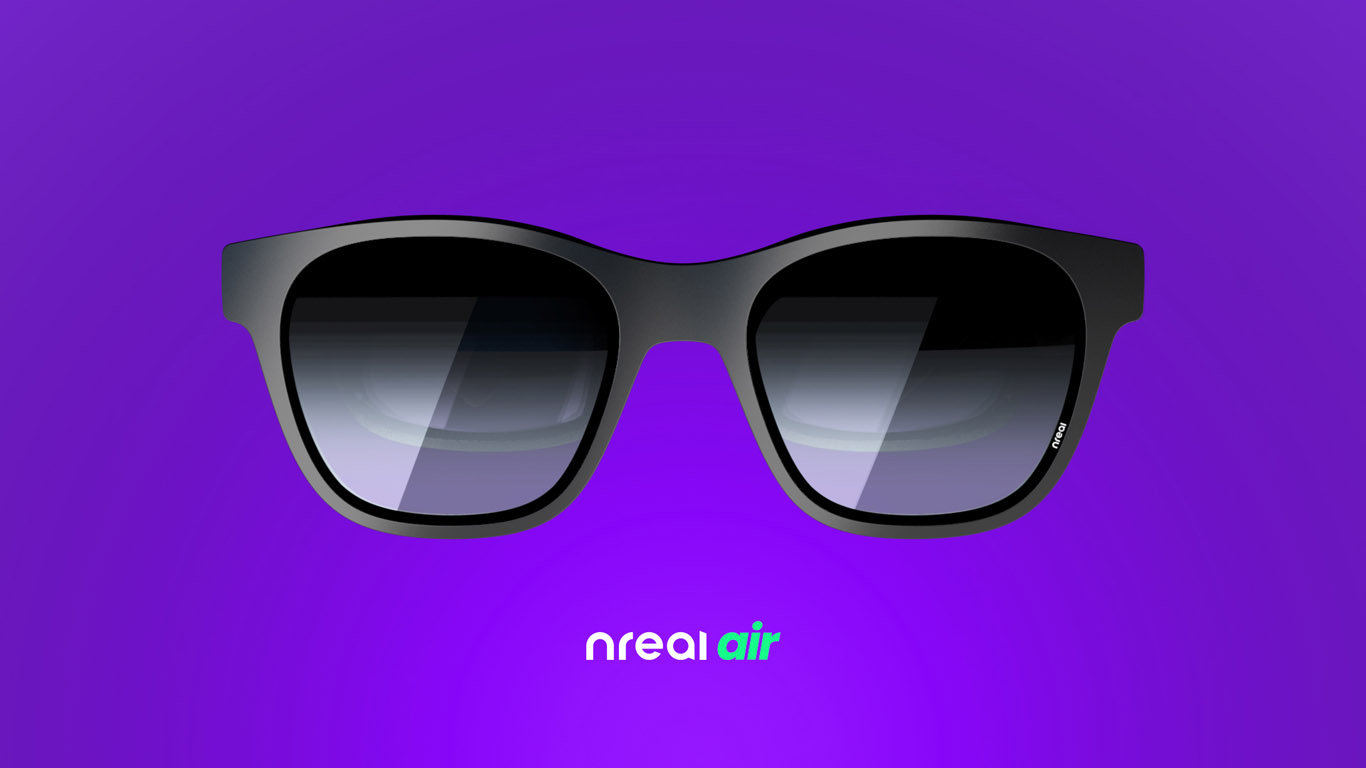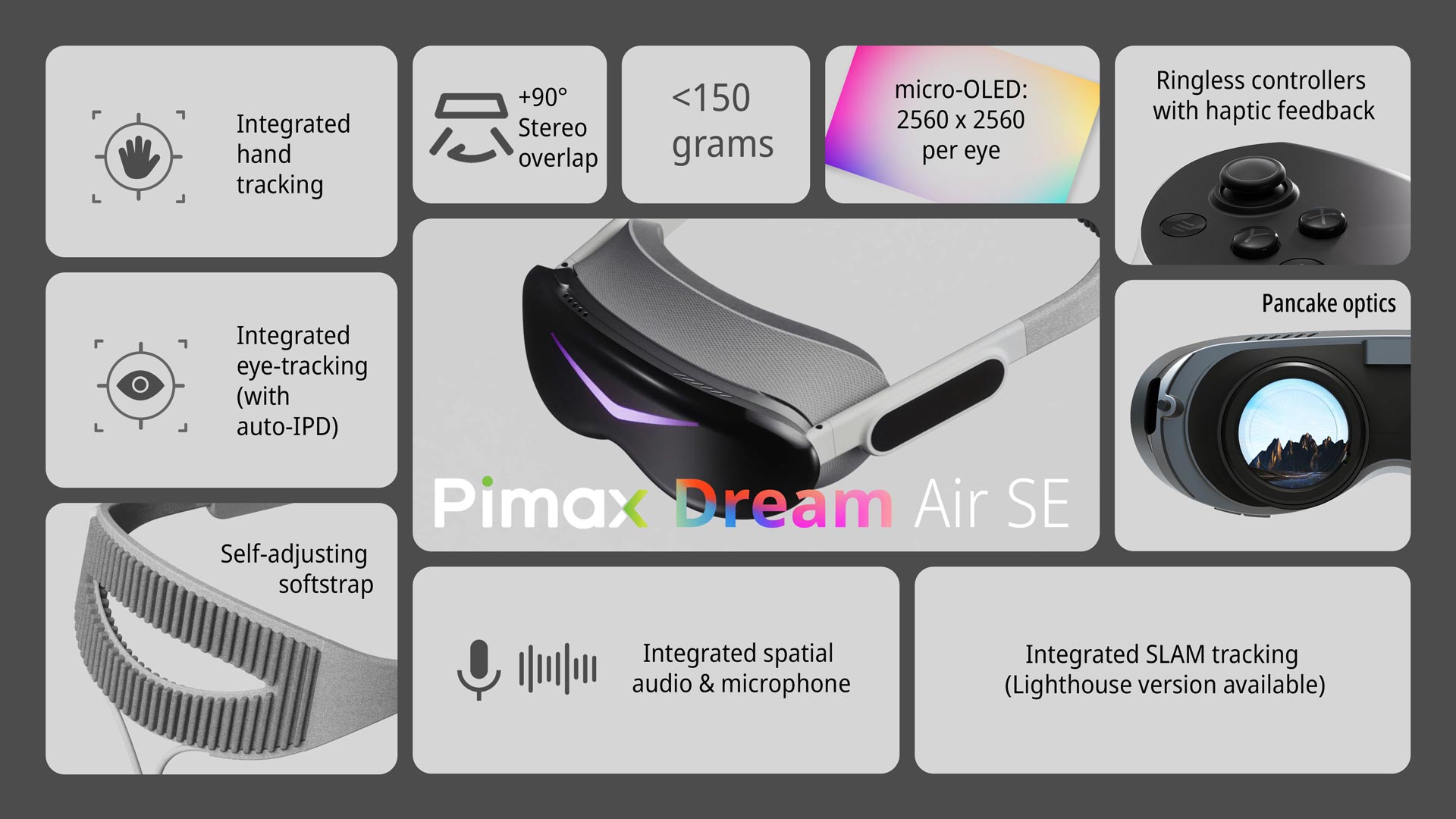Nreal announces Nreal Air AR glasses
After some days of teasing, Chinese AR company Nreal has finally announced its latest AR glasses: Nreal Air. I would define them as the “GearVR of augmented reality”. Let me tell you why.
Nreal
Nreal is one of the most interesting AR startups out there, and it has revolutionized the augmented reality sector launching the first stylish and affordable AR glasses during CES 2019. After that moment, many startups have tried to copy that design, and a new genre of devices has born. Nreal had got the eyes of all the XR developers and enthusiasts on, and many people wanted to buy that headset.
Unluckily, manufacturing and distribution of Nreal Light went much slower than we hoped for, and the glasses are at the moment available only in a limited set of countries and are not sold in big markets like the US and China.
While we were waiting for announcements of new markets where Nreal Light glasses could launch, Nreal got the headlines two weeks ago because it received a big investment of $100M, taking the valuation of the company to around $700M. Together with this news, Nreal CEO Chi Xu has also announced that the company was going to launch a new device, lighter and cheaper, that could make the company enter more easily in some markets like China. And today, this new device has been announced: it is called Nreal Air, and I’m going to describe it to you.
Nreal Air

Nreal Air is basically an AR viewer. Imagine it like a pair of AR glasses, very light and fashionable and that work only in 3DOF. They are able to show 2D and 3D content in front of you, but you are not able to walk around in your room and enjoy it from all positions. Its main purpose is watching video content and playing mobile games.
You may wonder why Nreal took this decision of going 3DOF, and the answer comes directly from Nreal CEO, that in the press release states that “[…] in Korea we’ve found that 78% of our users use Nreal Light to watch streaming content”. This reminds me a lot of the story of the GearVR: GearVR was made as a cheap headset to play VR games, but Oculus after its release discovered that most people just used it to watch 2D video content like Hulu or Netflix, and all the executives (like Carmack or Iribe) were really surprised. Here the situation is similar: Nreal discovered that most people in certain markets didn’t use the glasses much to play 3D AR content, but just to watch movies on a big screen, so it understood that there was the need for such a device.
Nreal Air is exactly that, a pair of glasses optimized to let you see video content in AR.
Nreal Air description

Looking at the technical specs, it is clear that Nreal has optimized the device to show beautiful visuals: the resolution given by the 90Hz micro-OLED display is great and paired with the fairly limited FOV, it creates a very good pixel density of 49 PPD (Pixels Per Degree). Nreal claims that Air is “capable of projecting up to a massive 201-inch virtual display, when viewed at a distance of 6 meters”, ensuring so a great visualization of multimedia content to the users. The main purpose of these glasses, as I’ve told you, is to make people watch videos and play mobile games. The Chinese startup is also working in giving to people the possibility of enjoying together content by “sharing” an AR screen.
The glasses work by being connected to the phone, and the company claims compatibility with Apple devices (through an adapter) and with most of the recent Android phones. Compatibility with iOS devices (iPhones and iPads) is quite big news since all AR glasses until now had been only compatible with Android phones. The phone should have a companion app installed, and the runtime environment for this glasses is still Nebula, that is already the UI of Nreal Light. Since Nebula is a 3D environment, it confirms that these glasses are not only made to show a 2D screen but can also show 3D elements around the user (I have also personally asked Nreal and they told me that the glasses are definitely able to show 3D content).
These glasses have also been optimized for design and comfort, and regarding both they seem to be midway between Ray-Ban Stories and Nreal Light. Nreal Air is very lightweight, weighing only 77g, which is halfway between 88g of Nreal Light and around 50g of Ray-Ban Stories. They are also stylish, and look more like regular sunglasses than the previous model… but have not the gorgeous look of Ray-Ban glasses. It has to be said that they offer more features than Ray-Ban glasses, though. The design that looks like normal sunglasses is fantastic so people can use these glasses also to watch content when they are outside without looking weird… and for this reason, Nreal made the glasses usable not only indoors, but also outdoors.
Nreal has also worked a lot to improve the ergonomics of the device so that it can be worn for many hours a day. Apart from the reduced weight, it has also introduced a new fit adjustment system that should make it suitable for most face shapes: called Adjustable 3-Step Rake System, it enables users to adjust the viewing angle by tilting the lens, and also features elastic temples that tightly hug the head and won’t slip. These are very welcome improvements, considering that this kind of AR glasses usually slip easily when you rotate your head.
Developer opportunities
It will be possible to develop for these glasses using a dedicated SDK. Its release is forecasted for next month.
Nreal Air vs Nreal Light

Nreal has confirmed to me that Nreal Light glasses are not going to disappear from the market, but they will coexist alongside Nreal Air. In fact, it has announced that Nreal Light is entering the US in Q4 2021.
The two SKUs are different devices aimed at different people. Nreal Light is more a tool for creators, enthusiasts, prosumers, that want to enter the augmented reality market and start experimenting with indoor 3D AR. They are more expensive, and a bit bulkier, but they have far more capabilities. They are good for people like me that love immersive realities.
Nreal Air is a consumer affordable product that can be bought for little money, and give people the possibility of watching multimedia content and video, and also start experimenting with 3D content around the user. It is more stylish and can be also be used outdoors. It is a product more aimed at the average consumer, and also more at the Asian market.
Price and Availability
Let me copy-paste the press release to tell you the only info that we have on price and release date of these glasses:
Nreal will first launch Nreal Air in December 2021 to three key Asian markets including Japan, China and South Korea in partnership with the world’s leading carriers. Nreal Air’s roll out to other markets will continue through to 2022. Pricing will be determined by local carrier partners but will retail at a fraction of the price of Nreal Light.
Personal commentary

Being a techie, for me the more features, the better, so I am more the target customer of Nreal Light, and Nreal Air looks a bit too simple for me. The fact that it is 3DOF also puzzles me, considering that the magic of AR is all in putting elements in your environment and moving around them. AR glasses that are just made to watch video content are not my piece of cake, but as I’ve said, these glasses are not aimed at people like me, so my opinion is not that important in this case. What puzzles me also considering this use case, though, is how this big screen can be viewed well with the little FOV of 46°: most probably this means that the virtual screen must be quite distant from you, and in fact, the press release talks about a screen that is a 6m from the user.
There are anyway things that I like about this device: the comfort looks great from the specifications, and the fitting mechanism from the description seems interesting because it could finally let every user adapt the glasses to his/her peculiar head shape. The screen density is amazing, too: 49PPD is more than the 47 of HoloLens 2, which Kipman claimed to be very high. Also the compatibility with iOS device comes as a very welcome surprise, and finally enables a new category of people to use AR glasses.
If you were looking for an AR viewer of media content, well, this seems an amazing device for your purpose. Of course, I would love to try them to give you a hands-on opinion about them, but on paper, it seems a device designed to do few things, and do them very well. Now the question is if there is a big market of people interested in this kind of device: I guess we’ll discover that in the next months after the launch of Nreal Air. In the meanwhile, 加油Nreal!
(Header image by Nreal)
Disclaimer: this blog contains advertisement and affiliate links to sustain itself. If you click on an affiliate link, I'll be very happy because I'll earn a small commission on your purchase. You can find my boring full disclosure here.



